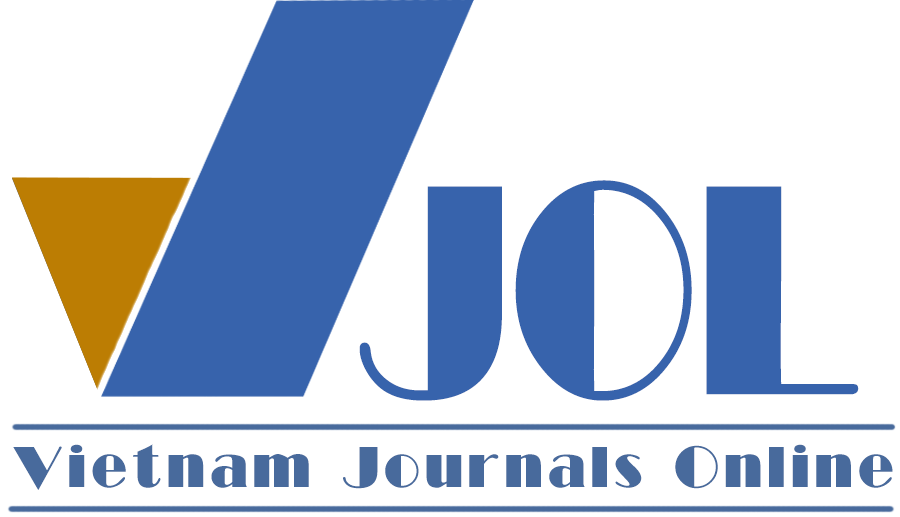The impact of transformational leadership on employee engagement in Japanese enterprises in Vietnam
Authors
DOI: https://doi.org/10.57110/vnu-jeb.v5i3.369Keywords:
Chế độ đãi ngộ, Nhật Bản, phát triển nghề nghiệp, phong cách lãnh đạo chuyển đổi, sự gắn bóReferences
Anitha, J. (2014). Determinants of employee engagement and their impact on employee performance. International Journal of Productivity and Performance Management, 63(3), 308–323. https://doi.org/10.1108/IJPPM-01-2013-0008
Avolio, B. J., & Bass, B. M. (1995). Full range leadership development: Manual for the Multifactor Leadership Questionnaire (5X short). Mind Garden.
Bass, B. (1995). Theory of transformational leadership redux. Leadership Quarterly, 6(4), 463–478. https://doi.org/10.1016/1048-9843(95)90021-7
Burns, J. M. (1978). Leadership. Harper & Row.
Carless, S. A., Wearing, A. J., & Mann, L. (2000). A short measure of transformational leadership. Journal of Business and Psychology, 14(3), 389–405. https://doi.org/10.1023/A:1022991115523
Conger, J. A. (1999). Charismatic and transformational leadership in organizations: An insider’s perspective on these developing streams of research. The Leadership Quarterly, 10(2), 145–179. https://doi.org/10.1016/S1048-9843(99)00012-0
Downton, J. V., Jr. (1973). Rebel leadership: Commitment and charisma in the revolutionary process. Free Press. https://doi.org/10.2307/2063573
Eldor, L., & Harpaz, I. (2016). A process model of employee engagement: The learning climate and its relationship with extra role performance behaviors. Journal of Organizational Behavior, 37(2), 213–235. https://doi.org/10.1002/job.2037
Fletcher, L., & Robinson, D. (2014). Measuring and understanding employee engagement. In C. Truss, R. Delbridge, K. Alfes, A. Shantz, & E. Soane (Eds.), Employee engagement in theory and practice (pp. 273–290). Routledge. https://doi.org/10.4324/9780203076965-20
Fornell, C., & Larcker, D. F. (1981). Evaluating structural equation models with unobservable variables and measurement error. Journal of Marketing Research, 18(1), 39–50. https://doi.org/10.1177/002224378101800104
Gerhart, B., & Milkovich, G. T. (1990). Organizational differences in managerial compensation and financial performance. Academy of Management Journal, 33(4), 663–691. https://doi.org/10.2307/256286
Hair, J. F. Jr., Anderson, R. E., Tatham, R. L., & Black, W. C. (1998). Multivariate Data Analysis (5th ed.). Prentice Hall.
Hair, J. F., Black, W. C., Babin, B. J., & Anderson, R. E. (2010). Multivariate Data Analysis (7th ed.). Pearson.
Hirschi, A. (2012). Callings and work engagement: Moderated mediation model of work meaningfulness, occupational identity, and occupational self-efficacy. Journal of Counseling Psychology, 59(3), 479–485. https://doi.org/10.1037/a0028949
Hoang, L. A., & Yeoh, B. S. A. (2012). Transnational labour migration and the politics of care in the Southeast Asian family. Geoforum, 43(4), 733–740. https://doi.org/10.1016/j.geoforum.2011.12.006
Hooper, D. T., & Martin, R. (2008). Beyond personal LMX quality: The effects of perceived LMX variability on employee reactions. The Leadership Quarterly, 19(1), 20–30. https://doi.org/10.1016/j.leaqua.2007.12.002
Hossan, D. (2021). Effect of leadership style on employee engagement with motivational factor as mediator. Academy of Entrepreneurship Journal, 27(Special Issue 2), 1–15.
Jiang, Y., & Chen, C. C. (2018). Integrating knowledge activities for team innovation: Effects of transformational leadership. Journal of Management, 44(5), 1819–1847. https://doi.org/10.1177/0149206316628641
Joshi, R. J., & Sodhi, J. S. (2011). Drivers of employee engagement in Indian organizations. Indian Journal of Industrial Relations, 47(1), 162–182.
Kahn, W. A. (1990). Psychological conditions of personal engagement and disengagement at work. Academy of Management Journal, 33(4), 692–724. https://doi.org/10.2307/256287
Kline, R. B. (2011). Principles and Practice of Structural Equation Modeling (3rd ed.). Guilford Press.
Macey, W. H., & Schneider, B. (2008). The meaning of employee engagement. Industrial and Organizational Psychology, 1(1), 3–30. https://doi.org/10.1111/j.1754-9434.2007.0002.x
Marwan, A. A. (2019). Employee engagement and leadership style: Literature review. Foundations of Management, 11(1), 33–42. https://doi.org/10.2478/fman-2019-0003
McBain, R. (2007). The practice of engagement: Research into current employee engagement practice. Strategic HR Review, 6(6), 16–19. https://doi.org/10.1108/14754390780001011
Milkovich, G. T., & Newman, J. M. (2008). Compensation (9th ed.). McGraw Hill/Irwin.
Mone, E. M., & London, M. (2010). Employee engagement through effective performance management: A practical guide for managers. Routledge. https://doi.org/10.4324/9781315626529
Mozammel, S., & Haan, P. (2016). Transformational leadership and employee engagement in the banking sector in Bangladesh. The Journal of Developing Areas, 50(6), 43–55. https://doi.org/10.1353/jda.2016.0127
Petrescu, A. I., & Simmons, R. (2008). Human resource management practices and workers’ job satisfaction. International Journal of Manpower, 29(7), 651–667. https://doi.org/10.1108/01437720810908947
Prochazka, J., Vaculik, M., Smutny, P., & Jezek, S. (2017). Leader–follower congruence in trait emotional intelligence and leadership effectiveness. Journal of Leadership Studies, 11(3), 21–26. https://doi.org/10.1002/jls.21518
Raabe, B., & Beehr, T. A. (2003). Formal mentoring versus supervisor and coworker relationships: Differences in perceptions and impact. Journal of Organizational Behavior, 24, 271–293. https://doi.org/10.1002/job.193
Sahu, S., Pathardikar, A., & Kumar, A. (2018). Transformational leadership and turnover: Mediating effects of employee engagement, employer branding, and psychological attachment. Leadership & Organization Development Journal, 39(1), 82–99. https://doi.org/10.1108/LODJ-12-2014-0243
Saks, A. M. (2006). Antecedents and consequences of employee engagement. Journal of Managerial Psychology, 21(7), 600–619. https://doi.org/10.1108/02683940610690169
Schaufeli, W. B., Bakker, A. B., & Salanova, M. (2006). The measurement of work engagement with a short questionnaire: A cross-national study. Educational and Psychological Measurement, 66(4), 701–716. https://doi.org/10.1177/0013164405282471
Smith, P. C., Kendall, L. M., & Hulin, C. L. (1969). The Measurement of Satisfaction in Work and Retirement. Rand McNally.
Sosik, J. J., & Godshalk, V. M. (2000). Leadership styles, mentoring functions received, and job-related stress: A conceptual model and preliminary study. Journal of Organizational Behavior, 21(3), 365–390. https://doi.org/10.1002/(SICI)1099-1379(200005)21:3
Wushe, T., & Shenje, J. (2019). The antecedents of employee engagement and their effect on public sector service delivery: The case study of government departments in Harare. SA Journal of Human Resource Management, 17, a1082. https://doi.org/10.4102/sajhrm.v17i0.1082
Downloads
Additional Files
Published
Abstract View
PDF Downloaded
How to Cite
Issue
Section
License
Copyright (c) 2025 Trịnh Hoài Anh

This work is licensed under a Creative Commons Attribution-NonCommercial 4.0 International License.
by VNU Journal of Economics and Business






